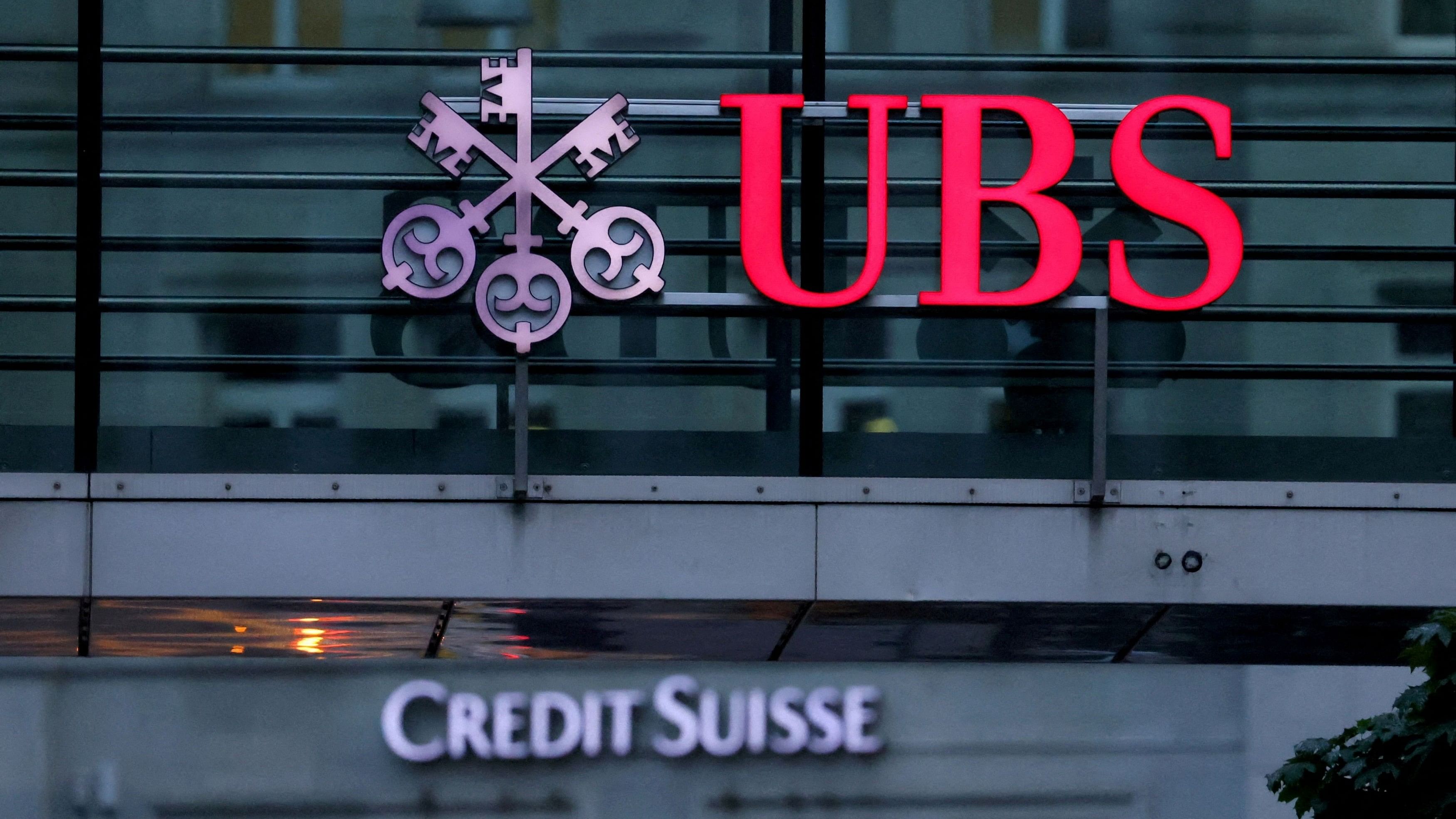
Logos of Swiss banks Credit Suisse and UBS are seen before a news conference in Zurich Switzerland, August 30, 2023.
Credit: Reuters File Photo
U.S. authorities are seeking evidence from Credit Suisse to assess whether the bank misled investors about its financial health as it teetered towards a state-backed rescue by UBS six months ago.
Credit Suisse "has received requests for documents and information" from agencies including the U.S. Securities and Exchange Commission, the U.S. Justice Department and Swiss regulator FINMA, UBS said in a financial filing on Aug. 31.
In the note, part of UBS's 124-page second-quarter report, UBS also said that three U.S. class-action lawsuits had been filed against Credit Suisse, as well as current and former directors, alleging misleading statements about customers withdrawing cash in late 2022.
Credit Suisse, which is now part of UBS, is cooperating with the authorities, UBS added in the filing.
UBS swept in to salvage its rival in March in a government orchestrated rescue after tens of billions of dollars left Credit Suisse amid a crisis of confidence in a market already rattled by a collapse of some regional U.S. lenders.
The biggest banking deal since the global financial crisis created a lender with a balance sheet of $1.7 trillion. The inquiries now highlight a potential risk of fines and penalties for UBS.
Credit Suisse and a SEC spokesperson declined to comment while UBS and the Justice Department did not respond to requests for comment.
FINMA supervises the bank very closely and requests necessary information and documents as part of its oversight, a spokesperson said, declining to comment on this particular case.
Reuters could not determine which period of disclosures the SEC, DOJ and FINMA are looking at and which Credit Suisse employees, if any, may be targeted.
At the end of February, Reuters reported that FINMA was reviewing whether remarks made by Credit Suisse chairman at the time, Axel Lehmann, about outflows having stabilized in early December were potentially misleading. Credit Suisse and Lehmann did not comment on the matter at the time.
On March 10, the regulator said it did not see sufficient grounds for proceedings against the bank in this case.
Lehmann did not immediately respond to request for comment on Tuesday.
Credit Suisse was hit by 110.5 billion Swiss francs ($124 billion) of outflows in the last three months of 2022 which pushed the bank close to the brink. Those outflows continued in the first half of 2023.
In the early hours of March 16, Credit Suisse said it intended to borrow from the SNB through a facility called Emergency Liquidity Assistance (ELA) to “pre-emptively” bolster its cash buffers.
But after Credit Suisse's reassurances that the 50 billion-franc injection would facilitate its turnaround and told staff and clients it remained a viable business, the bank needed more cash and was running out of collateral to pledge at the central bank.
A FINMA filing on Credit Suisse's additional Tier-1 bonds dated March 19 -- the day the rescue merger was announced -- said that as of mid-March Credit Suisse was close to falling below minimum levels of cash held at the Swiss central bank, putting at risk its ability to make payments properly. ($1 = 0.8964 Swiss francs)